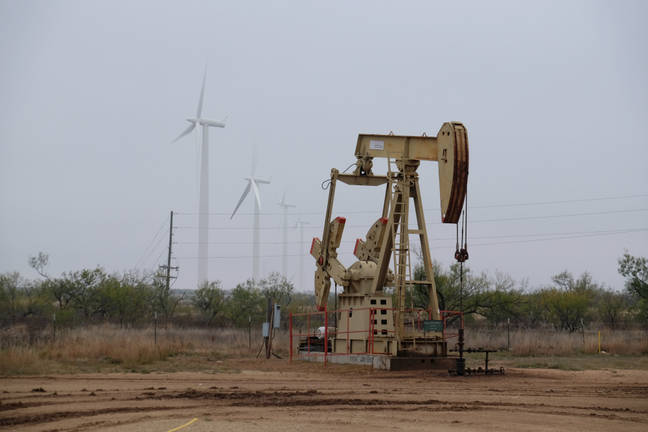Eventually James became an electrician—until 2003, when his son was born prematurely and needed someone to stay home with him. Since his wife made more money as a waitress at the local steakhouse, serving all the wind technicians who came in, it was James who became the stay-at-home parent. When his son was in school and he was ready to go back to work, he looked out at all those turbines popping up around his home and tried to get in on the boom, but employers wouldn’t hire him because of his lack of experience. So he enrolled in the new wind technician program down the road at TSTC. Now, seven years later, he is not only a certified wind technician, but also a teacher in the program.
“The path I was heading down for a while” was not a savory one, James told me as the sound of the students climbing overhead reverberated around us. “I luckily escaped prison. Everybody has their vices at one point in time, and it’s up to you to change your life and do what you need to do to be the better person. Wind helped me do that.”
It was like finding Jesus. But with a steady paycheck.
The elevator arrived, and James and I squeezed inside the cramped metal mesh container. We rose as if we were water, inching our way up the interior of a great redwood tree by capillary action.
Wind’s Ascent
Wind energy development in Nolan County dates back to 2001, when the first wind farmswere constructed in the area. A perfect confluence of events led to the growth of the industry since then.
There was a supportive state government, led by Republicans George W. Bush and then Rick Perry, pushing for wind by putting the regulatory and infrastructure pieces in place to make it successful. The state’s nearly autonomous electric grid meant no troublesome cross-border or federal approval was needed to get wind electricity from places like Sweetwater to the green-leaning urban markets clamoring for renewable energy. And then there were the Texans themselves, ever eager to use their land and diversify their revenue sources, especially as recurring droughts killed off the cotton and the livestock, and oil fields were either going dry or failing to pay for themselves. At the same time, federal incentives came (and went, and came again) in the form of production tax credits that helped the wind industry offset large investment costs.
Wind and oil operate side-by-side in West Texas, where ranchers often rely on lease payments from wind farms to diversify their income, particularly during drought years. Credit: Meera Surbamanian
If Texas were a nation, it would be the sixth-largest wind energy producer in the world. The bulk of that power is coming from the Nolan County region. And so the reddest parts of Texas are responsible for supplying upwards of 12 percent of the state’s energy needs every month with clean, green kilowatts. Occasionally, as happened one day in the blustery month of October this year (a time when those energy-sucking A/C units are switched off and electricity usage is low), it provided more than half of the electricity to the state’s power grid.
The Lure of Wind Industry Jobs
As the wind industry grew through the early 2000s, so did a desperate need for skilled labor. What emerged was the 2008 launch of TSTC’s Wind Energy Technology program, where James enrolled in 2010 and where he returned to teach in 2013 after working in the field for a couple of years.
Visits: 3


Be the first to comment